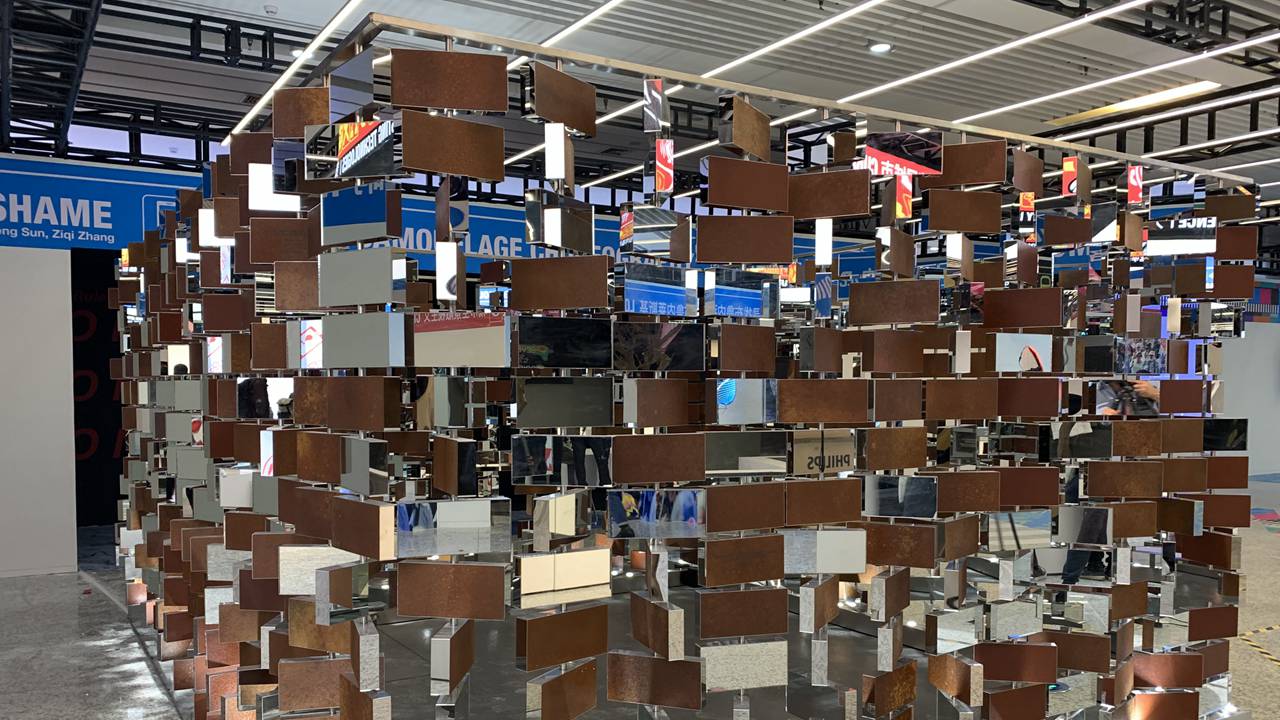UABB kicks off at Futian Railway Station
Writer: Chen Xiaochun | Editor: Stephanie Yang | From:

An exhibit is displayed at Futian Railway Station. Chen Xiaochun
The opening ceremony for the 8th Bi-City Biennale of Urbanism/Architecture (Shenzhen) (UABB) was held Saturday at Futian Railway Station — one of the two main venues for this year’s UABB — kicking off the more than two-month-long event that features exhibitions and talks being held at the two main venues and nine subvenues across the city.
The other main venue is Shenzhen Museum of Contemporary Art and Urban Planning (MOCAUP), which has an exhibition open to the public until March 8.Themed “Urban Interactions,” the exhibition consists of two sections, namely “Eyes of the City” and “Ascending City,” which explore the evolving relationship between urban space and technological innovation from different perspectives.
The team of chief curators includes architect and director of MIT Senseable City Lab Carlo Ratti, Chinese Academy of Engineering (CAE) academician Meng Jianmin and famous curator and art critic Fabio Cavallucci. The academic curator is South China-Torino Lab.
More than 140 works are on display by more than 280 participants from 24 countries and regions, including some well-known international and domestic architects, artists and institutes. A series of academic seminars and public events are being held during the opening week and throughout the exhibition period to attract a wide range of visitors.According to Ratti, what makes the Shenzhen biennale special is that it’s not only about putting different projects together but actually transforming the city.
Meng said the difficulties they have encountered during the process were beyond his expectations, and the exhibition is successful thanks to the support of various parties, including the government, the organizing committee, the curator team and all of the participants.
Exhibited at the Futian Railway Station venue, the “Eyes of the City” section is jointly curated by Ratti and South China-Torino Lab. It aims to explore how artificial intelligence is going to impact architecture as well as people’s daily lives, by initiating discussions on “the future, technology and city” to reveal the technological changes and encourage responses to technology in design.
Exhibited in MOCAUP, the “Ascending City” section is curated by the team headed by Meng and Cavallucci, gathering a number of prestigious architects, artists, filmmakers and writers as well as interdisciplinary members who explore the methodology of this UABB in a brand-new and profound way.
“Ascending City” consists of three sub-sections, namely “Empowering Citizens in Progressive Cities,” “Urban Alchemists” and “Daily Sci-Fi,” which correspond to the views of users, creators and thinkers in the city, respectively.
The “Empowering Citizens in Progressive Cities” sub-section looks at the city from the perspective of citizens, examining the relationship between emerging technologies and urban residents and the dramatic changes it brings to the identity and self-identity of individual citizens.
The “Urban Alchemists” subsection records and reflects on the transformations of a city from the perspectives of architects, artists and urban planners. The “Daily Sci-Fi” subsection aims to build a bridge between the tangible and the intangible, reality and ideal, existence and imagination.